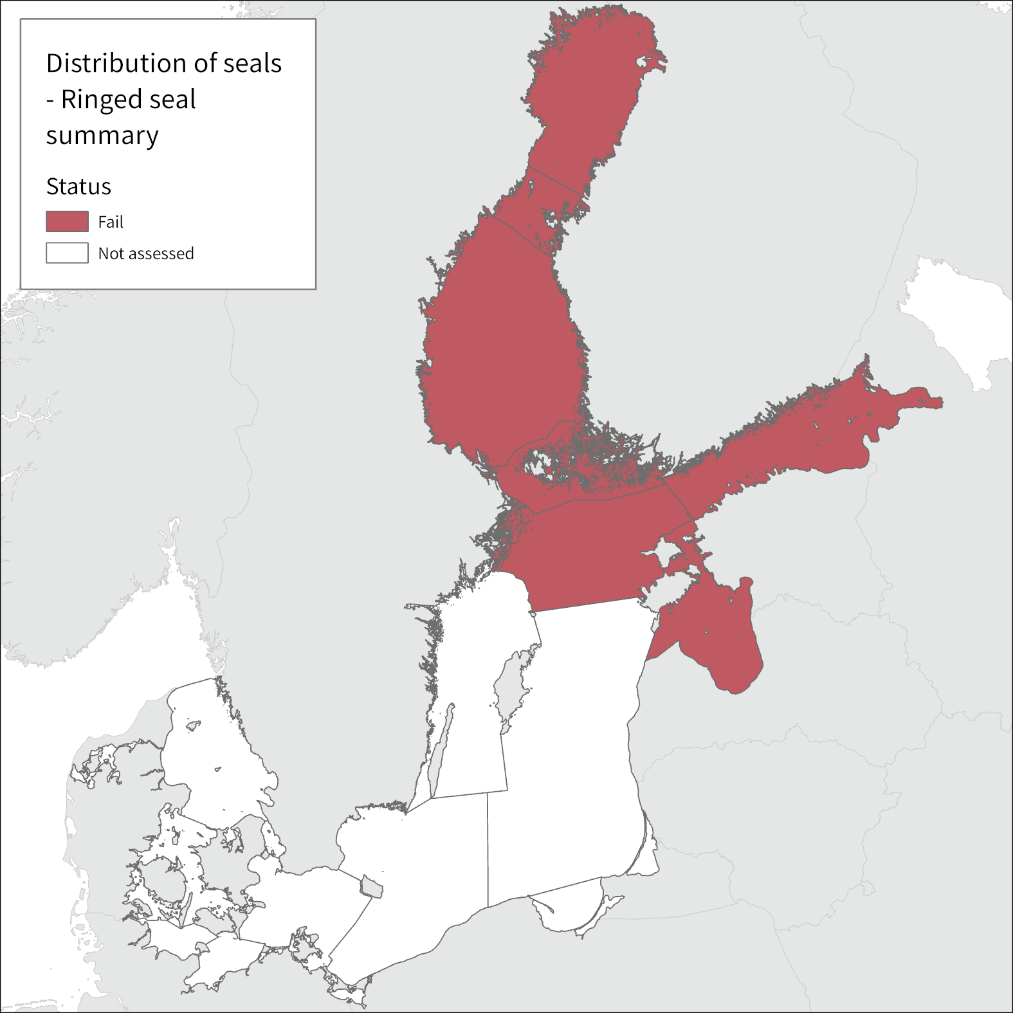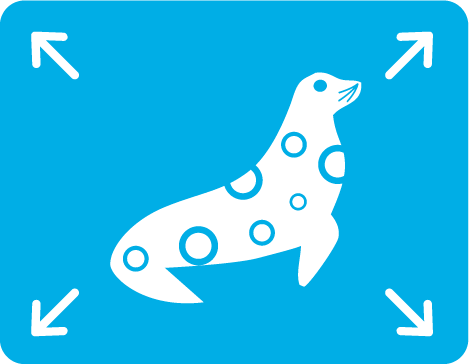 Ringed seal distribution
Ringed seal distribution
2 Relevance of the indicator
2.1 Ecological relevance
The distribution of seals reflect changes in the number of marine top predators in the Baltic Sea. Being top predators of the marine ecosystem, marine mammals are good indicators of the state of food webs, levels of hazardous substances and direct human disturbance. Seals are exposed to bottom-up effects of ecosystem changes at lower trophic levels, but also to variations in climate (length of seasons and ice conditions) and human impacts. These pressures can affect seals indirectly through e.g., decline of fish stocks, levels of harmful substances, or reproductive success, in addition to causing direct mortality by hunting or by-catch. The vulnerability of seals to these pressures makes them good indicators for measuring the environmental status of ecosystems.
The distribution is a result of availability of suitable habitats, food and other resources, as well as anthropogenic disturbance. It is also affected by the abundance of seals. After a period of low abundance, recolonization of depleted areas can take time.
Regarding ringed seals, this indicator is applicable over the northern parts from Gulf of Riga to Gulf of Finland and Bothnian Bay.
2.2 Policy relevance
The core indicator on the Distribution of Baltic seals addresses the Baltic Sea Action Plan (BSAP 2021) Biodiversity segment goal of a “Baltic Sea ecosystem [that] is healthy and resilient”. The ecological objectives under this goal are also clearly relevant: ‘Viable populations of all native species’, ‘Natural distribution, occurrence and quality of habitats and associated communities’, and ‘Functional, healthy and resilient foodwebs’.
The HELCOM Recommendation 27/28-2 Conservation of seals in the Baltic Sea area outlines the conservation goals of seals agreed on at HELCOM. The recommendation is implemented to reach the BSAP goals. The recommendation conservation goals are used as the basis for defining this indicator’s threshold value.
The indicator also has clear relevance for the EU Marine Strategy Framework Directive (MSFD), for those Contracting Parties that are also EU Member States. In particular the relevance is high for MSFD Descriptor 1 that addresses species and habitats and also for Descriptor 4 that addresses ecosystems, including food webs.
A summary overview of policy linkages is provided in policy relevance table 1, below.
In some Contracting Parties, the indicator also has potential relevance for implementation of the EU Habitats Directive. The WFD includes status categories for coastal waters as well as environmental and ecological objectives. The EU Habitats Directive (European Commission 1992) specifically states that long-term management objectives should not be influenced by socio-economic considerations, although they may be considered during the implementation of management programmes provided the long-term objectives are not compromised. All seals in Europe are also listed under the EU Habitats Directive Annex II, and member countries are obliged to monitor the status of seal populations.
Table 1. Policy relevance of the indicator.
| Baltic Sea Action Plan (BSAP) | Marine Strategy Framework Directive (MSFD) | |
| Fundamental link
|
Segment: Biodiversity
Goal: “Baltic Sea ecosystem is healthy and resilient”
|
Descriptor 1 Species groups of birds, mammals, reptiles, fish and cephalopods.
|
| Complementary link
|
Segment: Biodiversity
Goal: “Baltic Sea ecosystem is healthy and resilient”
Segment: Hazardous substances and litter goal Goal: “Baltic Sea unaffected by hazardous substances and litter”
|
Descriptor 1 Species groups of birds, mammals, reptiles, fish and cephalopods.
Descriptor 4 Ecosystems, including food webs.
Descriptor 8 Concentrations of contaminants are at levels not giving rise to pollution effects.
|
| Other relevant legislation: |
|
|
2.3 Relevance for other assessments
The status of biodiversity is assessed using several core indicators. Each indicator focuses on one important aspect of this complex issue. In addition to providing an indicator-based evaluation of the population trends and abundance of seals, this indicator will also contribute to the overall biodiversity assessment, along with the other biodiversity core indicators.
The results are utilised in the HELCOM Biodiversity integrated assessment (BEAT tool) to support an overall evaluation of marine mammal species/groups.
3 Threshold values
Good status reflected through the distribution of seals in the Baltic Sea is based on concepts developed for the conservation of seals. The concept for defining threshold values to indicate good status is derived from the general management principle in the HELCOM Recommendation 27/28-2, which states the aim to allow breeding seals to expand to suitable breeding distribution in all regions of the Baltic Sea.
Good status is achieved when the threshold values for all considered parameters are achieved. Good status is achieved when the distributions of seals are close to pristine conditions (e.g. 100 years ago), or where appropriate when all currently available haul-out sites are occupied (modern baseline), and when no decrease in area of occupation occurs (figure 2). Three different parameters of distribution are given for all species of seals: 1) Breeding distribution on land or ice, 2) Moulting distribution on land or ice, which refers to haulouts used for moulting and resting and 3) Area of occupancy, which includes sea areas used for transport and foraging.
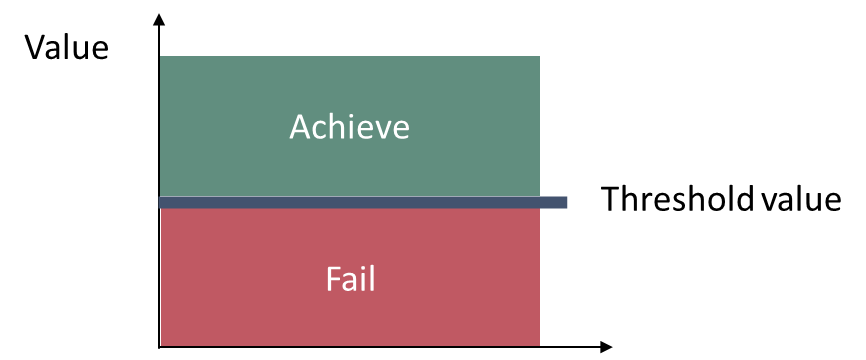
Figure 2: Good status is achieved when distribution of seals is close to pristine conditions (e.g. 100 years ago), or where appropriate when all currently available haul-out sites are occupied (modern baseline), and when no decrease in area of occupation occurs.
3.1 Setting the threshold value(s)
The following criteria are used to evaluate whether the threshold value is achieved or failed:
- Breeding distribution. Ringed seals breed in lairs constructed in snow-covered broken and consolidated ice. The sizes of the breeding areas display substantial inter-annual variation. The threshold value is achieved when the long-term breeding area is stable or not diminishing due to direct human activities.
- Moulting distribution. Ringed seals rest and moult on ice if available. During ice-free conditions, ringed seals haul out on rocks or small islands. The threshold value is achieved when ringed seals have colonized all available haul-out sites and the long-term haulout distribution is not diminishing.
- Area of occupancy. The threshold value is achieved when seals have access to all feeding grounds and they can move freely among haul-out sites and the feeding grounds.
4 Results and discussion
The results of the indicator evaluation that underlie the key message map and information are provided below.
4.1 Status evaluation
The ringed seal is evaluated in two management units: the Bothnian Bay and the southern management unit, the latter consisting of sub-populations in the Archipelago Sea, the Gulf of Finland and western Estonia (Gulf of Riga and Estonian coastal waters). Ringed seals are ice-dependent species and have evolved to both breed and moult on ice. Ringed seal abundance was severely reduced as a result of an international seal extermination campaign in the beginning of the 20th century. This also impacted the distribution of ringed seals in the Baltic, separating into the current sub-populations. Compared to the pristine conditions, distribution is today further restricted due to deteriorated ice-conditions.
Overall evaluation: Breeding and moulting distributions are restricted for all subpopulations of ringed seals. Therefore, based on the one-out-all-out concept, ringed seals do not achieve good environmental status for the Distribution indicator in either of the management units (Figure 3).
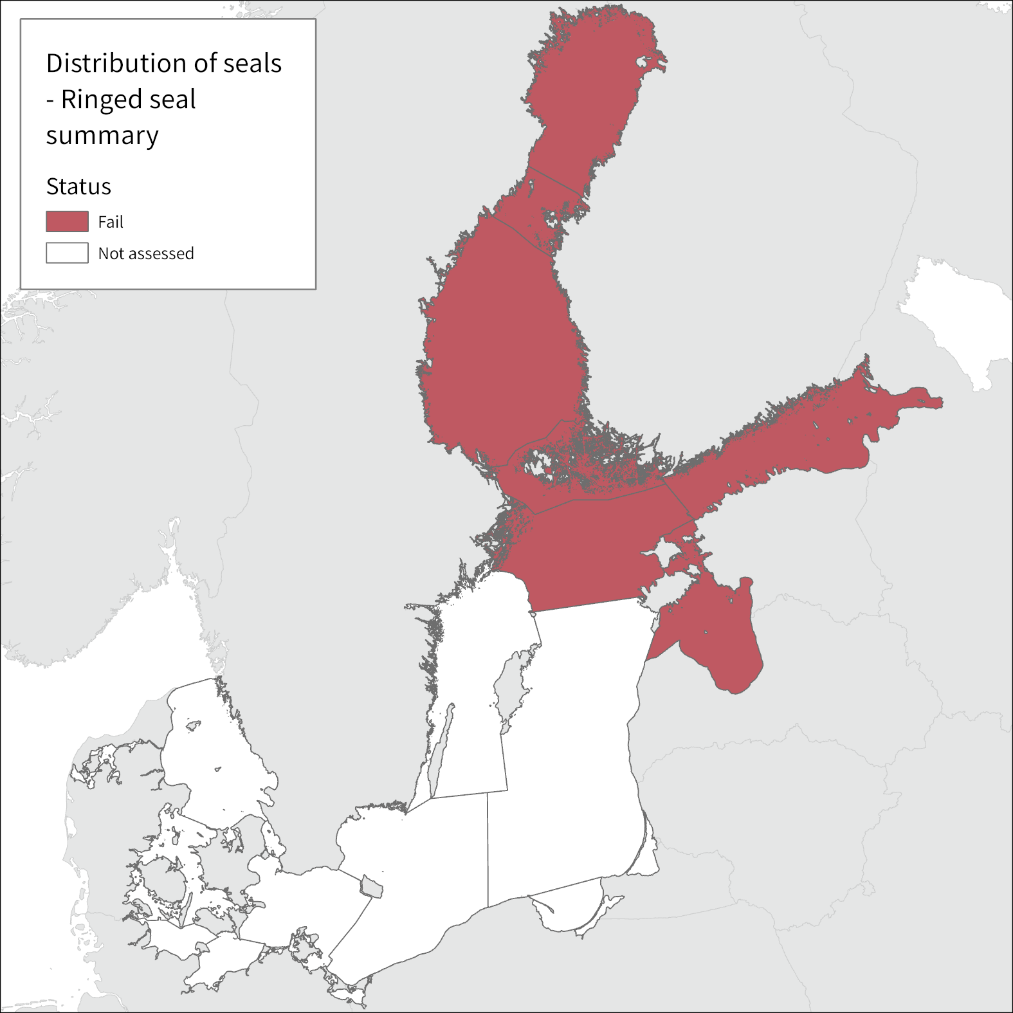
Figure 3: Status evaluation outcome for ringed seal distribution.
Breeding distribution: The winter distribution of ringed seals is tightly linked to the extent of sea ice. Females give birth to their pups in snow lairs, which protect the pups against the elements and predators (results figure 2). The highest concentrations of seals are seen in broken consolidated pack ice that traps snow heaps. Formation of this type of ice is critical for the breeding success of this species.
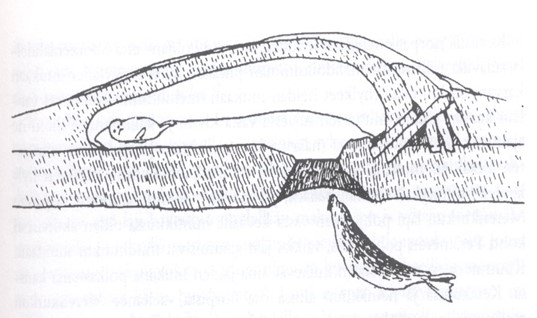
Figure 4: Ringed seal breeding lair on the ice. Access to broken consolidated sea ice is critical for ringed seal breeding success (Sundqvist et al. 2012).
The extent and quality of ice varies considerably between years, but there has been a significant reduction of the formed sea ice area since the 1970s, when compared to historical data (results figure 3). Ringed seal breeding distribution is closely linked to the extent and composition of the ice cover and the deterioration of the ice conditions poses a threat to ringed seal populations.
Climatological modelling shows that the situation is predicted to result in diminishing ice fields and shorter ice-covered seasons in the future. This will increase the risk of extirpation of the ringed seal sub-populations in the Gulf of Riga, the Archipelago Sea and the Gulf of Finland and severely reduce the population growth rate in the Bothnian Bay (Sundqvist et al. 2012, Meier et al. 2004, 2022). The declining extend of suitable sea ice limits the breeding distribution of the ringed seals in all subpopulations. Therefore, they have not returned to their pristine distribution area and fail to achieve good environmental status for breeding distribution.
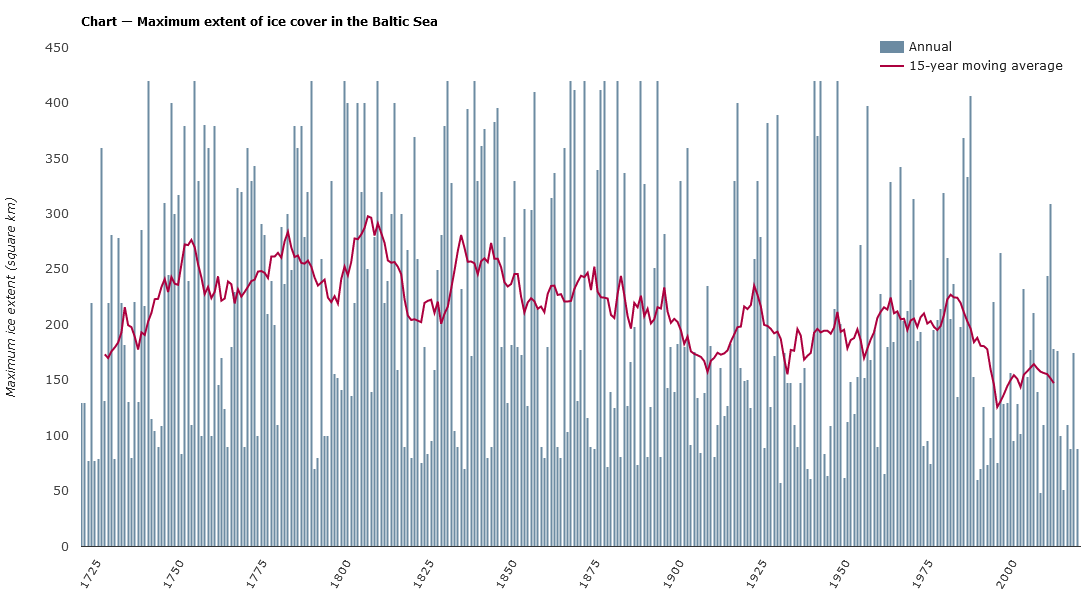
Figure 5: Extent of maximum annual sea ice fields in the Baltic since 1720 (European Environment Agency (EEA) 2019). A significant drop occurred after 1970. Predicted future changes will reduce suitable breeding ice for ringed seals and grey seals.
Moulting distribution: Annual aerial surveys during the ringed seals moult on ice have been conducted since 1988 in the Bothnian Bay. The distribution has been similar during years when ice fields extended down to the northern Quark area. The highest density of seals have then been observed in the central northern part of the Bothnian Bay (figure 6), which is similar to observations made in 1930 (Olofsson 1933). When ice fields break up early, ringed seals show a different pattern of distribution already in the early phase of the moulting season. They gather in larger groups along ice cracks or leads, and when ice is scarce they haul out on rocks. This has become more common in recent years.
In 1996, the Gulf of Finland and the Gulf of Riga were also covered by ice, permitting the first comprehensive survey of ringed seals in the entire Baltic (figure 6). More recently, such ice-years have been rare and land haulouts have become increasingly important for ringed seals in the southern areas. The same land haulouts are used for moult in ice-free winters and for resting during the foraging seasons. Although there is no long-term monitoring data on the usage of the land haulouts by ringed seals, some earlier regularly used haulouts in the Archipelago Sea have been abandoned recently.

Figure 6: Winter distribution of ringed seals hauled out on ice during the 18th to 25th of April 1996, when ice fields extended to the northern Quark area in the Bothnian Bay, much of the Gulf of Finland and the Gulf of Riga.
Compared to pristine conditions / time before the extirpation campaigns of seals in the early 1900’s, ringed seal distribution is today clearly more restricted and fragmented. Due to the decreasing ice-fields (figure 5) in all areas that ringed seals occupy they cannot access the same moulting areas as in pristine conditions, as such ringed seals fail to achieve good environmental status for moulting distribution.
Area of occupancy: During the winter, the breeding and moulting season, ringed seals are generally centred around the ice-fields (when ice is available). After this time, they range across the sea foraging. Although the area of occupancy is not routinely monitored it can be evaluated based on data collected from seals tagged with satellite transmitters, providing information on distribution at sea during ice-free winters and the summer and autumn period. These data show that, during the summer, ringed seals spend about 85% of their time in water – feeding, travelling and resting. Studies have shown that ringed seals mainly stay in the basins where they were tagged (figure 7; Härkönen et al. 2008), although some animals can move long distances (results figure 8; Oksanen et al. 2015).
Telemetry data and visual observations also show that ringed seals regularly use the same rocks to haul out on during the night. The distribution of these haul-out sites is well known in Estonia and Russia, but not to the same extent in Sweden and Finland.
Ringed seals have free access to haul-out sites and foraging areas. With the exception of the decreasing sea-ice cover, there is also no evidence to suggest that movement is restricted in the current assessment period. As such, the ringed seals are assessed as achieving good environmental status for all sub-populations for area of occupancy.
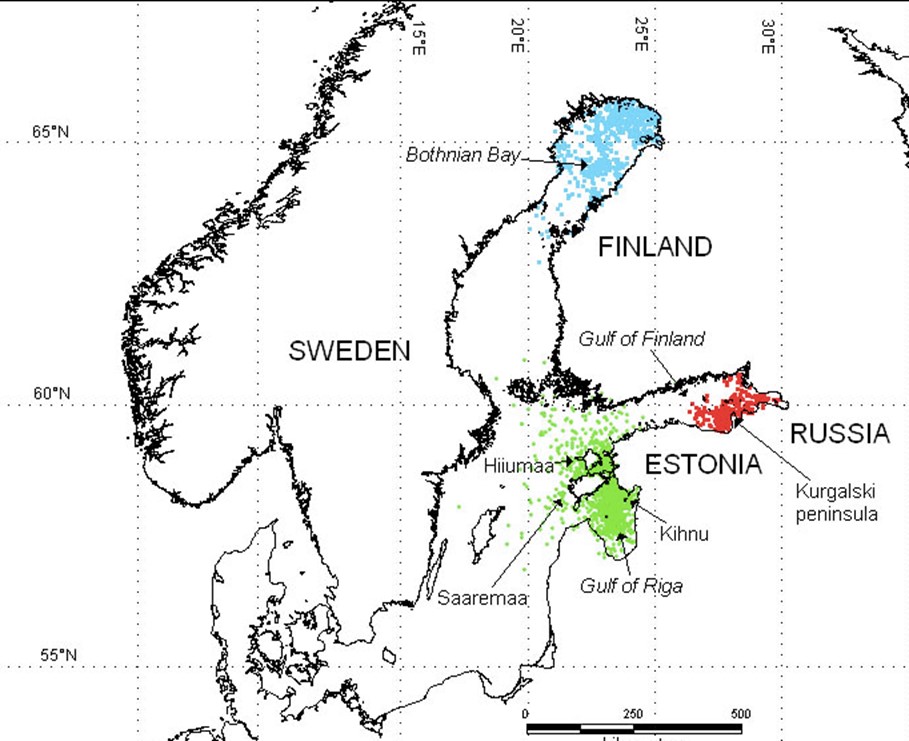
Figure 7: Positions of ringed seals tagged with satellite transmitters in the Bothnian Bay (blue), the Gulf of Finland (red), and Estonian coastal waters (green) during the ice-free period of the year (Härkönen et al. 2008).

Figure 8: Movements of ringed seals with satellite telemetry device tagged in Bothnian Bay in autumn according to Oksanen et al. (2015). Map A. shows the movements over the whole tracking period and B during the breeding time in February-March.
4.2 Trends
The core indicator Distribution of ringed seals was evaluated to be sub-GES in HOLAS II and the evaluation did not change to HOLAS 3.
4.3 Discussion
An overview of the status evaluation and a comparison between the current (HOLAS 3, 2016-2021) and previous (HOLAS 2, 2011-2016) periods is provide below in Table 2.
Table 2: Status of the evaluation per assessment unit.
| HELCOM Assessment unit name (and ID) | Threshold value achieved/failed | Distinct trend between current and previous evaluation. | Description of outcomes, if pertinent. |
| Bothnian Bay | Failed | Even though the indicator failed to achieve its threshold value in HOLAS II and HOLAS 3, the distribution of ringed seals for area of occupancy achieved the threshold value in both evaluations. | Indicator evaluation failed to achieve the threshold value in two out of three components, resulting in failing the overall threshold value (OOAO).
Climatological modelling predict that diminishing ice fields and shorter ice covered seasons will occur in the future . Since winter distribution and moulting distribution are tightly linked to sea ice coverage, this will severely reduce the population growth rate in the Bothnian Bay. |
| Southern management unit (the Archipelago Sea, the Gulf of Finland and western Estonia) | Failed | Even though the indicator failed to achieve its threshold value in HOLAS II and HOLAS 3, the distribution of ringed seals for area of occupancy achieved the threshold value in both evaluations. | Indicator evaluation failed to achieve the threshold value in two out of three components, resulting in failing the overall threshold value (OOAO).
Climatological modelling predict that diminishing ice fields and shorter ice covered seasons will occur in the future. Since winter distribution and moulting distribution are tightly linked to sea ice coverage, this will increase the risk of extirpation of the ringed seal sub-populations in the Gulf of Riga, the Archipelago Sea and the Gulf of Finland. |
5 Confidence
The confidence for the ringed seal evaluation is regarded as moderate since surveys are sporadic in their most southerly management area (the Archipelago Sea, Estonian Coastal waters and the Gulf of Finland). Survey data for ringed seals are available since 1988 in the Bothnian Bay, while data from aerial surveys in the southern areas are scarce. In recent years, surveys in ice-free circumstances have been developed and knowledge on the land haulouts has improved in all of the southern areas. Even with the incomplete survey data and gaps in the knowledge on the land haulouts and breeding sites in ice-free circumstances, the subpopulations in the southern management unit can be confidently assessed as having not achieved good status. They are all clearly below the thresholds for both breeding and moulting distributions.
Main pressures for ringed seals such as diminishing ice fields are well known on a qualitative level, but more work is needed to quantify those pressures. Change in the breeding or moulting area on ice has not been properly quantified based on the survey data, but it is clearly smaller compared to pristine times. The main change was achieved by the extirpation campaign on seals. The more recent changes are probably largely caused by climate change and detecting and separating effects of direct human activities such as marine traffic, hunting and leisure activities is challenging.
6 Drivers, Activities, and Pressures
Historically, hunting of seals has been a major human pressure on all the seal species in the Baltic Sea. A coordinated international campaign was initiated in the beginning of the 20th century with the aim of exterminating the seals (Anon, 1895). Bounty systems were introduced in Denmark, Finland and Sweden over the period 1889-1912, and very detailed bounty statistics provide detailed information on the hunting pressure. The original population sizes were about 180,000 for ringed seals, 80,000 for Baltic grey seals and 5,000 for the Kalmarsund population of harbour seals (Harding & Härkönen 1999; Härkönen & Isakson 2011).
Ringed seals declined to about 25,000 seals in the 1940s, whereas grey seals were reduced to about 20,000 (Harding & Härkönen 1999) over the same time period. Ringed seal breeding occurred in Stockholm county up to the beginning of the 1940s, but ceased in the mid of that decade (Hult 1943).
Table 3. Brief summary of pressures and activities with relevance to the indicator.
| General | MSFD Annex III, Table 2a | |
| Strong link | The main pressures affecting the distribution of Baltic seal populations include hunting, by-catches, disturbance and destruction of haul-out sites.
The effects of climate change are a threat to the ringed seal that breeds on sea ice |
Biological
|
| Weak link | Fishery and food availability. | Substances, litter and energy
|
Then, in the beginning of the 1970s grey seals were observed aborting near full term foetuses, and only 17% of ringed seal females were fertile (Helle 1980). Later investigations showed a linkage to a disease syndrome including reproductive disorder, caused by organochlorine pollution, in both grey seals and ringed seals (Bergman & Olsson 1985). The reduced fertility resulted in population crashes, where numbers of ringed and grey seals dwindled to approximately 3,000 of each species in the beginning of the 1980s (Harding & Härkönen 1999). Increasing numbers of these species were recorded after levels of PCB in biota decreased by the end of the 1980s. Recent samples show that fertility is still impaired in ringed seals (Bäcklin et al. 2011; Bäcklin et al. 2013).
During the last decade, hunting pressure on ringed seals has increased again in the Bothnian Bay management unit where the combined quota for Sweden and Finland has been over 700 ringed seals and majority of the quotas have been filled.
7 Climate change and other factors
Climate change is expected to have significant impacts on the Baltic Sea ecosystem (HELCOM and Baltic Earth, 2021). Climate change will likely have widespread impacts on the Baltic Sea ecosystem, including on higher trophic levels. Such changes may influence status evaluations and also need to be reflected in management (e.g. potentially the need to be precautionary). Climate change impacts could include flooding of haul out sites, changed temperature, stratification, and altered prey distribution, quality and quantity, all of which, though difficult to current predict risk impacts on marine mammals. Being at the top of the marine food web, these predators are sensitive to changes throughout the ecosystem, and changes in food webs on which they rely (and for which our current understanding is poor) may be significant with potential changes in food availability and altered transfer of contaminants.
Such food web and ecosystem changes may force a re-distribution of seals but a significant direct impact is the diminishing of sea-ice, causing lack of optimal breeding habitat and circumstances is suggested to effect survival of the pup for ringed seals. In addition, the environmental changes and changes in human activities associated with climate change will likely impact prey distribution, quality and quantity as well as altered transfer of contaminants (Meier 2022). However, the effects of climate change should themselves not be directly included in evaluations according to the Habitat Directive.
8 Conclusions
Breeding and Moulting is restricted for all subpopulations of ringed seals due to the diminishing ice-fields. Therefore, based on the one-out-all-out concept, ringed seals do not achieve good environmental status for the Distribution indicator.
8.1 Future work or improvements needed
Haul-out distribution on land is not fully documented for Sweden and Finland. On-land haul-out sites are likely to become of increasing importance in the future as the ice-cover decreases. Determining the on-land haul-out sites will help identify critical areas in the distribution range. Results from ongoing work on this are expected in near future.
9 Methodology
9.1 Scale of assessment
This core indicator evaluates the distribution of Baltic Sea seal species using HELCOM assessment unit scale 2 (division of the Baltic Sea into 17 sub-basins). The assessment units are defined in the HELCOM Monitoring and Assessment Strategy Attachment 4.
The existing management plans for seals operate according to management units that are based on the distribution of seal populations. The management units typically encompass a handful of HELCOM scale 2 assessment units. Evaluations are therefore done by grouping HELCOM assessment units to align with the management units defined for each seal population.
The assessment of ringed seals is carried out using grouping of scale 2 HELCOM assessment units.
9.2 Methodology applied
Monitoring methodology:
HELCOM common monitoring relevant for the distribution of seals is documented on a general level in the HELCOM Monitoring Manual in the sub-programme: Seal abundance.
HELCOM monitoring guidelines for seals were adopted in 2018 and currently all monitoring guidelines are being reviewed for inclusion in the Monitoring Manual.
Detailed descriptions of the survey methodology and analysis of results are given in the HELCOM monitoring guidelines. The monitoring carried out according to these guidelines will not be very sensitive to detecting positive changes in range and mainly constriction in range can be detected. Other means are needed for detecting range expansion, and surveys are adjusted to cover expansions in range based on satellite telemetry data and other observations.
Current monitoring:
The monitoring activities relevant to the indicators that are currently carried out by HELCOM Contracting Parties are described in the HELCOM Monitoring Manual: sub-programme: Seal abundance in the Monitoring Concept Table
Current monitoring covers all haul-out sites presently used by seals in the Baltic Sea and is considered to be sufficient to cover the needs of the indicator except for southern ringed seals. See description in the Assessment Requirements of the HELCOM Monitoring Manual for seals.
9.3 Monitoring and reporting requirements
On-land haul-out sites are likely to become of increasing importance in the future as the ice-cover decreases. Determining the on-land haul-out sites will help identify critical areas in the distribution range.
10 Data
The data and resulting data products (e.g. tables, figures and maps) available on the indicator web page can be used freely given that it is used appropriately, and the source is cited.
Result: Distribution of Baltic seals – Ringed seal
Data: Distribution of Baltic seals – Ringed seal
The national survey data is compiled annually by the HELCOM Seal Expert Group. A regional database has been developed and is hosted at the HELCOM Secretariat. A regional biodiversity database has been developed and is hosted at the HELCOM Secretariat. It includes detailed spatial information and is to be updated annually prior to HELCOM Expert Group on Marine Mammals meetings. The database is managed by the HELCOM Secretariat having responsibility for updating and storing data provided by the HELCOM Expert Group on Marine Mammals.
Status evaluations are to be accomplished by the Lead and co-Lead countries. The outcome of such evaluations will be presented and discussed at future HELCOM Expert Group on Marine Mammals meetings.
The data collected and used in the indicator are based on national aerial surveys. The survey methodology is described in Galatius et al. (2014). This data covers only haul-out sites and not areas used e.g. as foraging grounds.
11 Contributors
This indicator report for HOLAS III was prepared by Markus Ahola, Anders Galatius and Anja Carlsson. The assessment principles, methodology and background information are largely based on the previous assessment report prepared and supported by Tero Härkönen, Anders Galatius, Karin Hårding, Olle Karlsson, Markus Ahola, Lena Avellan, Petra Kääriä, Morten Tange Olsen.
HELCOM Secretariat: Jannica Haldin, Florent Nicolas, Owen Rowe.
12 Archive
This version of the HELCOM core indicator report was published in April 2023:
The current version of this indicator (including as a PDF) can be found on the HELCOM indicator web page.
Earlier versions of this indicator are available at:
Distribution of Baltic seals HELCOM core indicator 2018 (pdf)
13 References
Anon (1895) Svensk fiskeritidskrift 1895.
Bäcklin, B.-M., Moraeus, C., Roos, A., Eklöf, E., Lind, Y. (2011) Health and age and sex distributions of Baltic grey seals (Halichoerus grypus) collected from bycatch and hunt in the Gulf of Bothnia. ICES Journal of Marine Science, 68: 183–188.
Bäcklin, B.-M., Moraeus, C., Kauhala, K., Isomursu. M. (2013) Pregnancy rates of the marine mammals – Particular emphasis on Baltic grey and ringed seals. HELCOM web portal.
Galatius, A., Ahola, M., Härkönen, T., Jüssi, I., Jüssi, M., Karlsson, O., Verevkin, M. (2014) Guidelines for seal abundance monitoring in the HELCOM area 2014. Available at: http://helcom.fi/Documents/Action%20areas/Monitoring%20and%20assessment/Manuals%20and%20Guidelines/Guidelines%20for%20Seal%20Abundance%20Monitoring%20HELCOM%202014.pdf
Harding, K.C., Härkönen, T.J. (1999) Development in the Baltic grey seal (Halichoerus grypus) and ringed seal (Phoca hispida) populations during the 20th century. Ambio 28: 619-627.
HELCOM/Baltic Earth (2021) Climate Change in the Baltic Sea. 2021 Fact Sheet. Baltic Sea Environment Proceedings no. 180
Härkönen, T., Jüssi, M., Jüssi, I., Verevkin, M., Dmitrieva, L., Helle, E., Sagitov, R., Harding, K.C. (2008) Seasonal activity budget of adult Baltic ringed seals (Phoca hispida botnica). PLoS ONE 3(4): e2006.doi:10.1371/journal.pone.0002006
Harkonen, T., Isakson, E. (2011) Historical and current status of harbour seals in the Baltic proper. NAMMCO Scientific Publications 8: 71-76.
Helle, E. (1980) Lowered reproductive capacity in female ringed seals (Pusa hispida) in the Bothnian Bay, northern Baltic Sea, with special reference to uterine occlusions. Annales Zoologica Fennici 17: 147-158.
Hult, J. (1943) Sälen och säljakten i Östersjön under de senaste decennierna. Svenska Jägereförbundets tidskrift 81: 365-373.
Meier, H.E.M., Döscher, R., Halkka, A. (2004) Simulated distributions of Baltic Sea ice in the warming climate and consequences for the winter habitat of the Baltic Ringed Seal. AMBIO 33: 249–256.
Meier, H. E. M., Kniebusch, M., Dieterich, C., Gröger, M., Zorita, E., Elmgren, R., Myrberg, K., Ahola, M., Bartosova, A., Bonsdorff, E., Börgel, F., Capell, R., Carlén, I., Carlund, T., Carstensen, J., Christensen, O. B., Dierschke, V., Frauen, C., Frederiksen, M., Gaget, E., Galatius, A., Haapala, J. J., Halkka, A., Hugelius, G., Hünicke, B., Jaagus, J., Jüssi, M., Käyhkö, J., Kirchner, N., Kjellström, E., Kulinski, K., Lehmann, A., Lindström, G., May, W., Miller, P., Mohrholz, V., Müller-Karulis, B., Pavón-Jordán, D., Quante, M., Reckermann, M., Rutgersson, A., Savchuk, O. P., Stendel, M., Tuomi, L., Viitasalo, M., Weisse, R., and Zhang, W. 2022. Climate Change in the Baltic Sea Region: A Summary, Earth Syst. Dynam. 13: 457-593, https://doi.org/10.5194/esd-13-457-2022.
Oksanen, S.M., Niemi, M., Ahola, M.P., Kunnasranta, M. (2015) Identifying foraging habitats of Baltic ringed seals using movement data. Movement Ecology DOI 10.1186/540462:015-0058-1.
Olofsson, O. (1933) Om vikaresälens hispida annelata storlek och föda mm. Fauna och Flora 1933: 17-28.
Sundqvist, L., Harkonen, T. Svensson, C.J., Harding, K.C. (2012) Linking climate trends to population dynamics in the Baltic ringed seal – Impacts of historical and future winter temperatures. Ambio. DOI 10.1007/s13280-012-0334-x
14 Other relevant resources
No additional information is required for this indicator.
